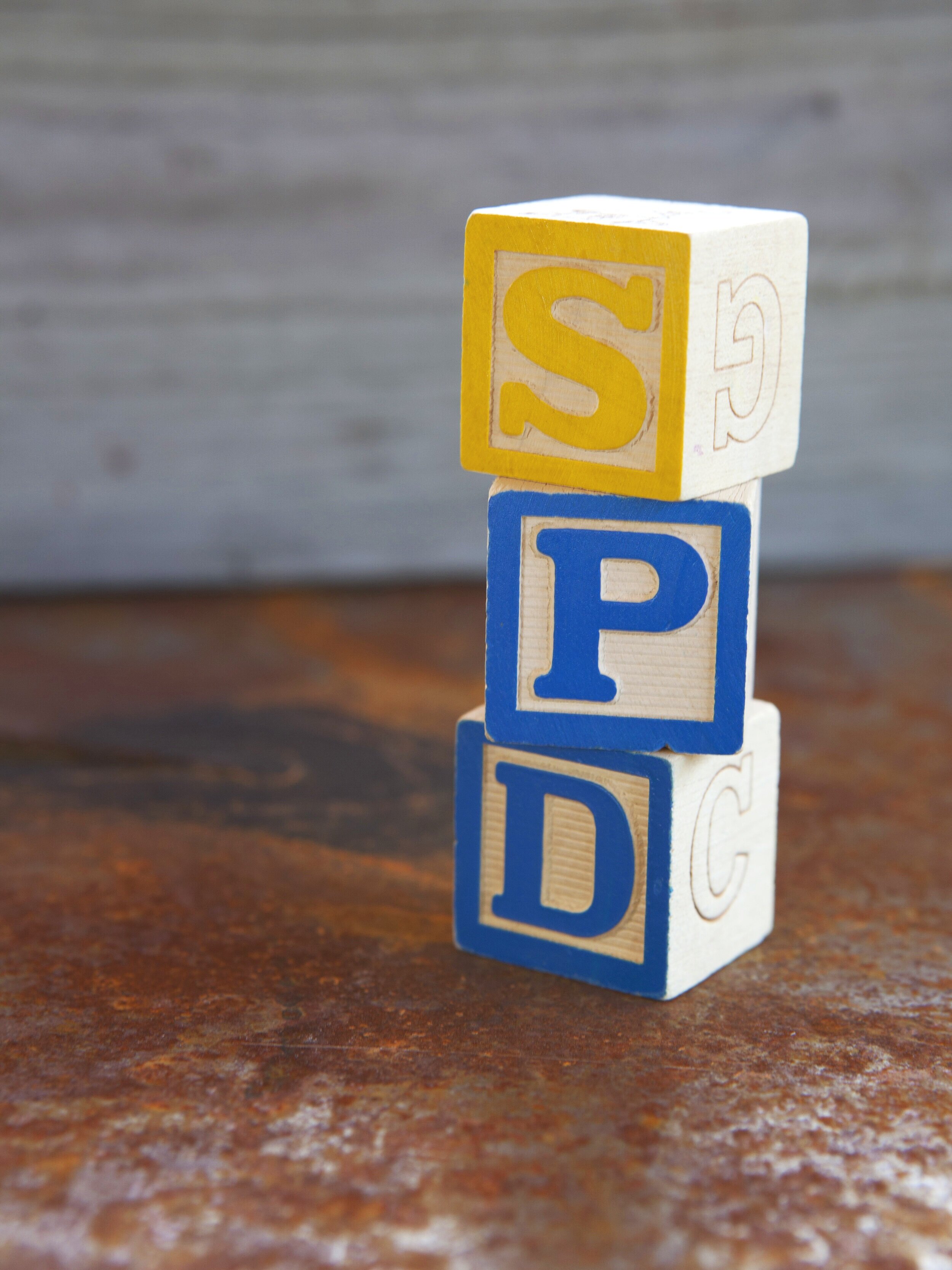Sensory Processing Issues in Children
What is sensory integration?
Sensory integration is recognizing, organizing and interpreting everyday sensations in order to properly function in everyday life. Everyone has a sensory integration system that helps them make sense of the world around them.
For example, if we have properly functioning systems, we are able to properly sit in a chair, write with a pencil, walk on uneven surfaces, avoid bumping into objects, and execute various motor tasks. Integration of the sensory systems is critical for normal development, including but not limited to motor skills, posture, and social emotional development.
What is sensory processing disorder?
Sensory processing disorder, or SPD, is an extreme over or under reaction to normal, everyday sensory information. Some children may feel ambushed by daily sensory information, whereas others may crave and seek out certain sensations to soothe their sensory systems. Some children may be in constant motion while others fatigue easily, and some may even fluctuate between these extremes. For someone with sensory processing disorder, everyday tasks become much harder. Sensory processing disorder can present on its own, or it may be accompanied with attention deficit hyperactivity disorder (ADHD), obsessive compulsive disorder (OCD), and many children on the autism spectrum experience sensory issues, as well.
What are some signs to look out for?
Now that you understand how the sensory system works and the important part it plays in our everyday tasks, here are some behaviors to look for in your child.
Your child can show signs of over-reaction or under-reaction to sensations, as well as, sensory seeking or sensory avoiding behaviors. Signs of over reactions, or hypersensitivity, may include low pain thresholds, resisting hugs, appearing clumsy, covering eyes or ears frequently, sensitivity to clothing or other textures, or picky eating. Many hypersensitive children will show signs of sensory avoiding behaviors, such as avoiding playing on the playground or avoiding touching or eating different textures.
Whereas signs of under reactions, or hyposensitivity, may include bumping into walls, frequently putting objects in mouth, hyperactivity, extreme amounts of jumping or spinning, or crashing into things or people. Many hyposensitive children will also demonstrate sensory seeking behaviors, such as deliberately crashing into things or chewing on objects to receive more sensory input.
Sensory disorders can also affect your child behaviorally, by showing signs of impulsivity or irritability, they may become easily distracted, or may even show signs of aggression. Knowing some of these signs can help you determine if occupational therapy is right for your child.
How does SPD affect my child?
Deficits in sensory integration can cause greater challenges in development, self-care tasks, learning, playing, socializing and demonstrating appropriate behaviors. Sensory difficulties can cause anxiety, difficulty with self-regulation, and can be a large barrier affecting your child’s success in and out of the classroom. Sensory integration, if not treated, can impact work and school performance, emotional relationships and everyday functions. It’s important to recognize the signs and symptoms mentioned above and provide your child with the proper support needed to regulate their sensory system. You, as the parent, are an essential part of the treatment since you are the expert on your child and know their priorities.
How does OT help?
Fortunately, SPD requires NO medication and experts recommend occupational therapy to assess and address your child’s sensory needs. OT utilizes evidence-based interventions to provide your child with a sensory rich environment where they can explore through touch and movement. OT can change neurological functioning in children and teach them to manage and control sensation to behave in a functional manner. These interventions help increase self-awareness and provide behavioral strategies to cope with everyday sensory experiences. With fun, play-based intervention, OT can help to organize your child’s nervous system, facilitating learning and growth.
How do I, as an occupational therapist, treat someone with SPD?
As an occupational therapist, I am able to address the impact of SPD on daily activities by identifying barriers and providing a sensory diet. A sensory diet will include modifications to your child’s environment, activities and sensory stimulations, while using sensory exploration to identify coping strategies. I provide interventions that give your child sensory information to help organize their central nervous system and assist them in providing more organized responses to sensory stimulations. And most importantly, interventions are fun and play-based that your child won’t even know that they are in therapy!
What does sensory integration therapy look like?
Sensory integration therapy looks like your child is playing and having fun! They may swing, play on a scooter, explore different touch sensations, exploring through mazes and obstacle courses, or even receiving joint compression for various forms of sensory input. And what does all of this do? It helps organize your child’s sensory system so that they can better interpret daily sensory information and perform daily functions.
Please email Christina Davino with any questions at info@frankenbergerassociates.com



